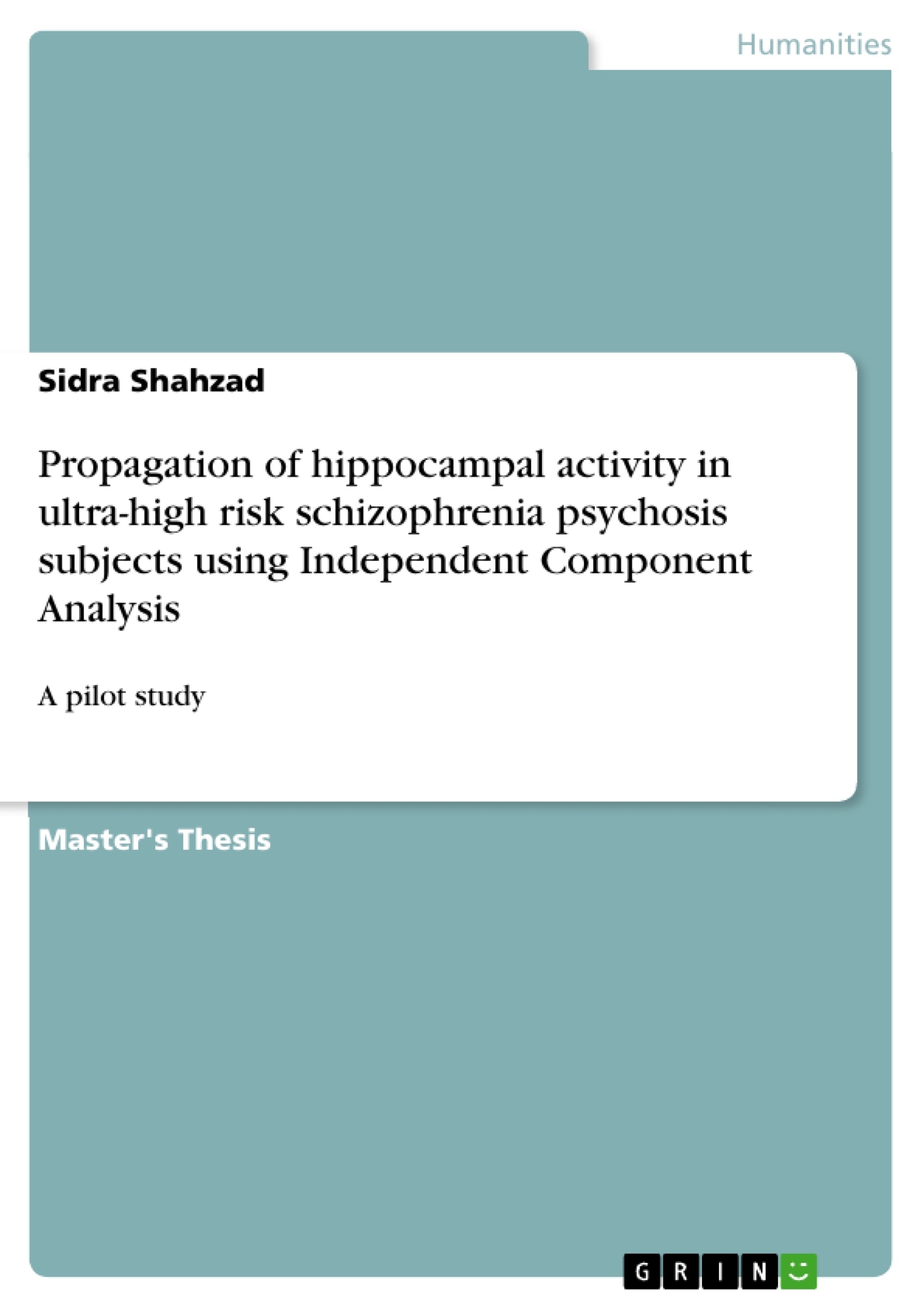Schizophrenia is described as an incapacitating, chronic and severe mental illness which affects about 1% of the population. Among the most frequently prominent of the cognitive symptoms in schizophrenia are deficits in working memory. More recently, individuals at ultra-high risk (UHR) of psychosis have been proposed to help provide awareness on the nature of prodromal stages and further acknowledge the initial stages to offer possibilities for early and more distinct interventions. It is particularly critical to perform studies on UHR of psychosis subjects as around 30% of UHR people experience progression into psychosis within two years.
A pilot study was conducted (8 females, 4 males) to examine visual P300 amplitude and detect hippocampal activity through scalp EEG, using the ICA analysis methodology. A smaller separate study was also conducted amongst UHR subjects (3 males, 1 female) and controls (2 males, 1 female).
Findings revealed a pattern of high amplitude positivity across the ipsilateral anterior basal temporal, and mid parietal electrodes, alongside a low amplitude positivity, distributed around the cheekbones; similar patterns were identified in UHR subjects. UHR subjects displayed a higher P300 amplitude compared to controls, contrary to previous findings.
The results of the present study provide a stepping stone for future studies to conduct further research incorporating additional source localisation analysis such as sLORETA. Understanding the location of the source of the P300 could allow prospective studies to determine and predict conversion to psychosis and act as possible biomarkers of psychosis amongst individuals with UHR, allowing a platform to provide early interventions for these at-risk individuals.
Inhaltsverzeichnis (Table of Contents)
- Introduction
- Schizophrenia and Visual Working Memory.
- Ultra-High-Risk of psychosis
- Ultra-High-Risk of psychosis and Visual Working Memory...
- Hippocampus and Visual Working Memory
- Hippocampal Impairments in Schizophrenia.....
- The P300 event related potential ……………….
- P300 Impairments in Schizophrenia
- The P300 as a putative biomarker of psychosis risk
- Detecting hippocampal activity through scalp EEG
- Rationale, Aims and Hypotheses
- Methods.
- Participants..
- Pilot study sample
- PSYSCAN study sample..
- Inclusion and exclusion criteria..........\li>
- Ethical considerations
- Visual Working Memory Task (based on Hannula, 2015).
- Design and Procedure...........
- EEG Data Acquisition and analysis.
- ERP Processing
- Statistical Analysis .....
- Results.
- Pilot Study Analysis ......
- Demographics.........
- ERPS.....
- Visual Analysis of EEG 3D Amplitude Maps
- Power Analysis..........\li>
- PSYSCAN Study Analysis
- Demographics...\li>
- ERPS
- Independent samples t-test .\li>
- Visual Analysis of EEG 3D Amplitude Maps
- Discussion
- P300 ERP components in a visual working memory task\n.
- Mesial sources contribution to scalp EEG
- Hippocampus activation and Visual Working Memory.\n.
- P300 ERP in UHR subjects.
- Hippocampal activity detection in UHR subjects
- Strengths of the current study....
- Limitations of the current study\n.
- Future directions...........
- Conclusion..........\li>
Zielsetzung und Themenschwerpunkte (Objectives and Key Themes)
This dissertation aims to investigate the propagation of hippocampal activity in individuals at ultra-high risk (UHR) of psychosis using Independent Component Analysis (ICA) of scalp EEG data during a visual working memory task. The study examines the P300 event-related potential (ERP) as a potential biomarker for psychosis risk, with a particular focus on understanding the role of the hippocampus in visual working memory and the implications for early interventions in individuals at risk of developing schizophrenia.
- The role of the hippocampus in visual working memory and its impairment in schizophrenia.
- The use of the P300 ERP as a potential biomarker for psychosis risk.
- The identification of hippocampal activity in UHR individuals using scalp EEG and ICA.
- The implications of these findings for early interventions in individuals at risk of psychosis.
- The potential for future studies to use source localization analysis to further refine the understanding of hippocampal activity.
Zusammenfassung der Kapitel (Chapter Summaries)
The introduction provides an overview of schizophrenia, visual working memory, and the concept of ultra-high risk (UHR) of psychosis. It discusses the role of the hippocampus in visual working memory and the relationship between hippocampal impairments and schizophrenia. The chapter also reviews the P300 ERP and its potential as a biomarker for psychosis risk.
The methods section outlines the study design and procedures, including participant recruitment, the visual working memory task, EEG data acquisition, and analysis. The results section presents the findings of both the pilot study and the PSYSCAN study, including demographic data, ERP analysis, and visual analysis of EEG 3D amplitude maps.
The discussion chapter explores the significance of the study's findings in the context of existing research on P300 ERP components, hippocampal activity, and visual working memory. The chapter also highlights the strengths and limitations of the study and outlines potential directions for future research.
Schlüsselwörter (Keywords)
Schizophrenia, Ultra-High Risk (UHR), Psychosis, Visual Working Memory, Hippocampus, P300 Event-Related Potential (ERP), Independent Component Analysis (ICA), Source Localization, Biomarker, Early Intervention.
- Quote paper
- Sidra Shahzad (Author), 2017, Propagation of hippocampal activity in ultra-high risk schizophrenia psychosis subjects using Independent Component Analysis, Munich, GRIN Verlag, https://www.grin.com/document/418222



